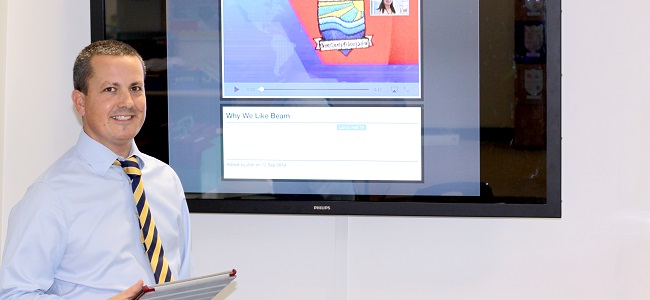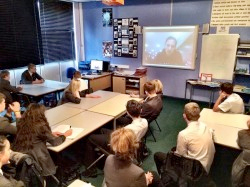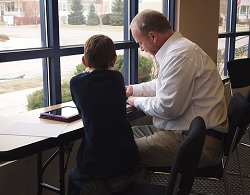Creating video projects and resources allows for a lot of creativity, which is why one east London school has chosen to fully adopt a new system into their school: TrilbyTV.

Beam County Primary School in Dagenham have been using a video creation and storage system to innovate their school in big ways. ICT coordinator John Filer (pictured above) and his colleagues have introduced TrilbyTV into the school, in order to enhance the quality of various literacy, numeracy and science projects, as well as to create fun pupil roles within the building, such as lunchtime monitors. As a result of embracing this new system, the school has seen a huge rise in pupil-engagement, which has had an impact on all areas of the curriculum.

This practical guide is for teachers looking to adopt a flipped learning approach to their classroom.
If you’re still not sure what a flipped classroom looks like, or if you want to confirm what you think you know, take a few minutes to read my guest post for the Senior Leaders site: ‘The Future of Learning’.
To create my own flipped learning videos, I use the brilliant Explain Everything app for iPad. For £1.99 you really can’t go wrong with this app. The following guide shows how I create my videos using this app.

Mobile learning is gaining momentum. Over the next two years, 12 to 17 year-olds will be the second largest adopters of smartphone technology according to eMarketeer.
At the same time, an increasing number of schools are providing smartphone and tablet technology to aid 'anytime, anywhere' learning.
The mobile classroom provides many benefits: convenience; the ability to repeat specific parts of any training until a topic is understood; using familiar platforms; and empowering students to take ownership of their own learning. It also encourages the 'flipped classroom' model – an approach I used with my pupils.
This is a ‘how to’ post that was inspired by this post over at Noel Jenkins’ excellent Digital Geography. This in turn led me to another useful and creative blog by Paul Bogush and this post on creating RSA Style animation videos with the class. If you want to know how to do it properly, I recommend that you head over to Noel and Paul’s posts first.
This post is the story of how a class of Year 10 Geography students got on with the challenge. Before I start, it’s worth looking at how the experts do it:
During the development unit, I wanted time to really explore the idea of the factors that affect the economic development of countries. In particular, I’ve always struggled to get students to link these factors together. After some of the more traditional lessons, I decided to give this a try. In the end, it took 3 ‘double lessons’, so 6 hours in total.

A community-driven platform for showcasing the latest innovations and voices in schools
Pioneer House
North Road
Ellesmere Port
CH65 1AD
United Kingdom